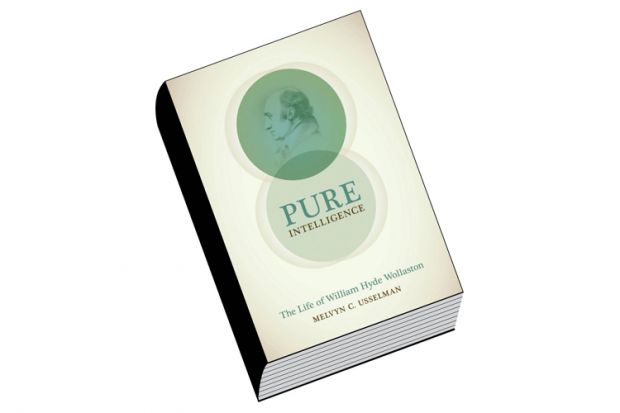Biographers and diamond traders have much in common. The trader searches for a high quality stone that may have passed unnoticed and then cuts and polishes it so that its beauty and fascination are revealed. The biographer seeks to do something similar with a life. In William Wollaston, Melvyn Usselman has found a long-neglected but vastly interesting subject and presented us with a gem of a book.
Wollaston (1766-1828) made contributions to organic, inorganic, physical and analytical chemistry, optics, crystallography, mineralogy, physiology, electricity, instrument design and manufacture, physiology and kinematics. He was the first to isolate the noble metals palladium and rhodium, and his long-time collaborator Smithson Tennant discovered osmium and iridium. Wollaston was also a successful manufacturing chemist and entrepreneur. The breadth of his interests is staggering, and he was widely influential both in the UK and on the Continent. Conversing with him, according to William Whewell, polymath and master of Trinity College, Cambridge, was “like talking to pure intelligence”. Yet today he is barely known.
A major activity for 30 years of Wollaston’s life was the production and sale of “malleable platinum”. The mineral platina had been identified in what is now Colombia in about 1740. Its major component was the dense element platinum. Despite extensive effort, reliable methods of purifying the metal and rendering it into workable, malleable form were lacking at the start of the 19th century. Wollaston worked out how to do this, and in partnership with Tennant established and maintained from his home a very profitable business based on the production of malleable platinum. All information on his process, which relied on Wollaston’s detailed research on the chemistry and metallurgy involved, was kept secret and published in the Royal Society’s Philosophical Transactions only after his death. The discovery of new elements was a by-product of this activity.
Wollaston was a careful and meticulous thinker and experimenter who gave 100 per cent concentration to the matter in hand. His biographer, similarly accurate and focused, used Wollaston’s notebooks to reproduce and check some of his subject’s chemical procedures. Usselman’s book paints a picture of the full breadth of Wollaston’s professional life that is close up and detailed. However, more information on the broader scientific context in which he operated would have been welcome, and we are given only a limited picture of Wollaston the man. Although devoted to his family, he never married. It seems that gregariousness and sociability developed with age. Intolerant of what he considered error, he may not have been the easiest friend.
Along with Thomas Young and Humphry Davy, Wollaston was for many years one of three secretaries of London’s Royal Society. Usselman argues that one reason that Wollaston became less well known than his two colleagues was his disinclination to indulge in theoretical speculation. I think that this is only part of the story. Davy is remembered for his lamp and Young for his modulus and fringes. It is said that the fox knows many things, but the hedgehog knows one big thing. Wollaston knew many, many things – but perhaps for scientific fame it is better to be the hedgehog than the fox.
Melvyn Usselman died on 23 March in his seventieth year. He leaves this excellent and very readable book as a substantial academic memorial.
Richard Joyner is emeritus professor of chemistry, Nottingham Trent University.
Pure Intelligence: The Life of William Hyde Wollaston
By Melvyn C. Usselman
University of Chicago Press, 424pp, £24.50
ISBN 9780226245737 and 5874 (e-book)
Published 5 June 2015
Register to continue
Why register?
- Registration is free and only takes a moment
- Once registered, you can read 3 articles a month
- Sign up for our newsletter
Subscribe
Or subscribe for unlimited access to:
- Unlimited access to news, views, insights & reviews
- Digital editions
- Digital access to THE’s university and college rankings analysis
Already registered or a current subscriber?




